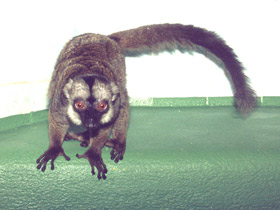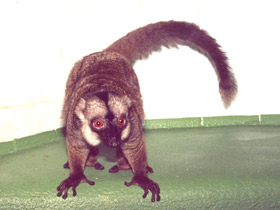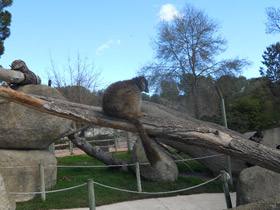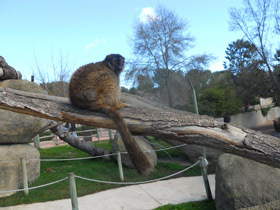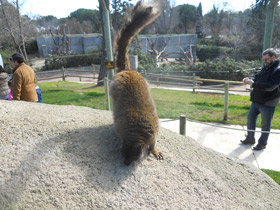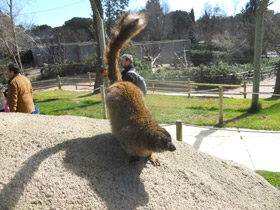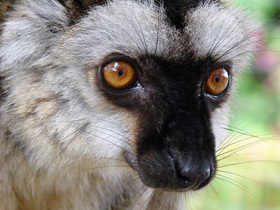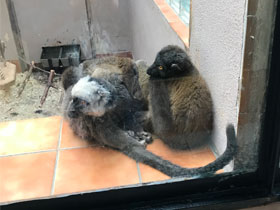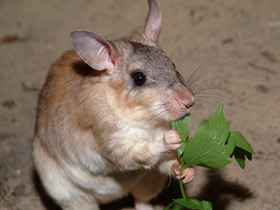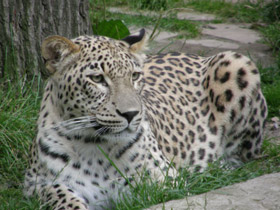The common brown lemur (Eulemur fulvus)
Common brown lemur видео
The common brown lemur (Eulemur fulvus) is a species of lemur in the family Lemuridae. It is found in Madagascar and has been introduced to Mayotte.
Taxonomy
Five additional currently recognized species of lemur were until 2001 considered subspecies of Eulemur fulvus. These are:
- White-fronted brown lemur, Eulemur albifrons;
- Gray-headed lemur, Eulemur cinereiceps;
- Collared brown lemur, Eulemur collaris;
- Red-fronted brown lemur, Eulemur rufus;
- Sanford's brown lemur, Eulemur sanfordi.
However, a number of zoologists believe that Eulemur albifrons and Eulemur rufus should continue to be considered subspecies of Eulemur fulvus.
Appearance, habitat area and nutrition
Eulemur fulvus is a species of strepsirrhine primate in the family Lemuridae.
Eulemur fulvus is small and about the size of a domestic cat, with a length of 84-101 cm (41-51 cm for the tail) and a weight of 2-3 kg. Males and females differ slightly in coat colouring: males are brownish-grey with a darker stripe on the back, while females have a reddish-brown coat.
The range of Eulemur fulvus in Madagascar and Comoros is quite wide and includes several forest types: lowland and montane moist forests, moist evergreen forests and dry deciduous forests.
Eulemur fulvus has different colouring in different parts of its range and forms six subspecies. Eulemur fulvus are arboreal animals, spending approximately 95% of their time in the upper layers of trees and only 2% of their time on the ground, where they descend only when absolutely necessary.
These half-monkeys have binocular vision and move through the leafy crowns on four legs, swinging their fluffy tails. Madagascar's forests, rich in vegetation, provide its inhabitants with succulent leaves almost all year round. Interestingly, the body of the Eulemur fulvus is better adapted to the high concentration of toxins found in many tropical plants.
Eulemur fulvus feeds on fruits, young leaves and flowers, and sometimes eats cicadas, spiders and millipedes, as well as bark, resin, soil and red clay. Eulemur fulvus is mainly active during the day, but can be active at all hours, especially on moonlit nights and during the dry season.
Behavior
Consistent with its large range, the common brown lemur occupies a variety of forest types, including lowland rainforests, montane rainforests, moist evergreen forests and dry deciduous forests. They spend about 95% of their time in upper layers of the forest and less than 2% of their time on the ground.
They normally live in groups of 5 to 12, but group size can be larger, especially on Mayotte. Groups occupy home ranges of 1 to 9 hectares in the west, but more than 20 hectares in the east. Groups include members of both sexes, including juveniles, and there are no discernible dominance hierarchies.
They are primarily active during the day, but can exhibit cathemeral activity and continue into the night, especially during full moons and during the dry season.
In the western part of its range, the common brown lemur overlaps that of the mongoose lemur, and the two species sometimes travel together. In the areas of overlap, the two species also adapt their activity patterns to avoid conflict. For example, the mongoose lemur can become primarily nocturnal during the dry season in the areas of overlap.
At Berenty (south Madagascar) there is a population of introduced E. fulvus rufus x collaris. These lemurs show linear hierarchy, adult female dominance, and the presence of conciliatory behavior after aggressions. Additionally, stress levels (measured via self-directed behaviors) decrease at the increase of the hierarchical position of individuals within the social group and reconciliation is able to bring stress down to the baseline levels.
Behaviour and reproduction
Eulemur fulvus usually live in groups of 5 to 12 individuals, but in some parts of their range up to 30 animals may live together. Groups consist of both sexes and juveniles, and there is no strict hierarchy within groups.
The area of a group can vary from 7 to 20 ha in the western part of the range to more than 20 ha in the eastern part. During the day, large groups of Eulemur fulvus often break up into smaller groups that come together again to feed at night. The breeding season of the Eulemur fulvus is in May and June. After a gestation period of 120 days, the female usually gives birth to one calf, less often two, weighing about 80g. The mother feeds them with milk for up to 4-6 months. The calf hangs permanently on her belly for the first three weeks, after which it moves on its mother's back. The three-week-old baby begins to take its first independent steps and tastes solid food given by the mother or other members of the group. At 5-6 months of age, the calf becomes fully independent. Sexual maturity is reached at 18 months and females can breed at 2 years.
The Eulemur fulvus has a lifespan of over 30 years.









